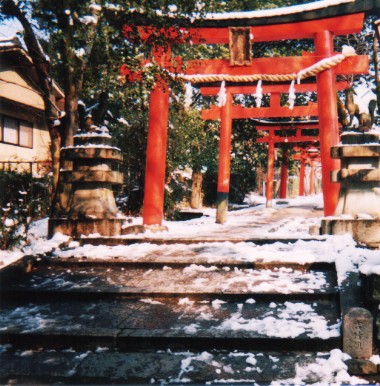MURYOKO

'Infinite Light'
Journal of Shin Buddhism
Harold Stewart
Limitations of Zazen

It is quite possible by such meditation practices as zazen, concentrating on control of mind and body by strength of individual will to attain, through moments of satori, to an elevated stage of purely intellectual insight into Reality. Yet, at the same time, that kind of training alone may leave the whole affective side of one's human nature still untamed and unredeemed. Sensations, feelings, emotions, moods, wishful fantasies or daydreams, and other aspects of the psyche, moved by non-rational impulses and passions, may, though consciously controlled or suppressed, remain as latently rebellious and unregenerate as before. Nor can they be reached and refined by a dry scholastic study of texts and theories, by a restrictive obedience to monastic regulations and moral prohibitions or by the practice of zazen alone. Even granting that meditation, whether with the aid of a koan, as in Rinzai, or 'just sitting' in themeless meditation (shikantaza) as in the Soto sect, is the heart of Zen, the modern tendency to isolate zazen from its total monastic context and to prescribe it as a psycho-therapeutic panacea for Westerners necessarily limits its full effectiveness in leading to Enlightenment.
Although modern Western transplanted Zen may be called by the same name, it has largely been deprived of its Eastern cultural environment and spiritual climate. So its imbalance needs to be corrected by compensatory Buddhist methods. For to tame man's animal drives and desires, to transmute our basic human mettle into spiritual gold, more than human intervention is required. For some temperaments, the ritual performances and iconographical visualizations of the Mikkyo or Esoteric sects, Shingon and Tendai, may prove to be efficacious; which is perhaps why some of the younger generation have now turned from the Zen meditation on Emptiness to the rich imagery of the Vajrayana from Tibet. Other persons may feel the need for religious devotion of a bhaktic kind, such as reverence for a Bodhisattva through contemplation of his image, or the repetition of the Sacred Name of a Buddha; and these are provided for by the Pure Land sects.
In the West we are all too familiar with the rational hypertrophy and emotional barbarism of certain intellectuals who are devoid of compassion or humility. To prevent such fixations of character, Zen itself recommends and encourages the practice of some traditional art, craft, or sport as an introductory means conducive to concentration and calm. For this reason Zen monks also, in rituals at prescribed times of the day and night, chant such sutras as the 'Kannon-bon', the twenty-fifth chapter of the Lotus of the True Law (Sanskrit: Saddharma-pundarika-sutra) in praise of Avalokiteshvara; or go on rounds of begging to inculcate humility and gratitude. Even Hinayana monks perform devotional pujana, placing offerings at the feet of Shakyamuni's image, as well as practising the Four Sublime Abodes: universal friendliness, unconditional compassion, sympathetic joy, and impartial detachment.